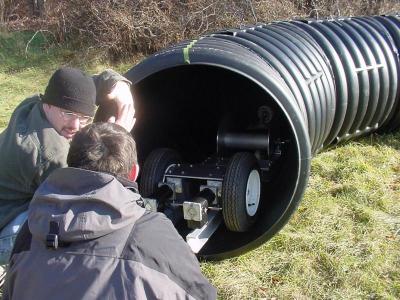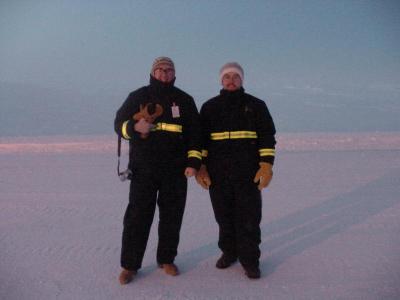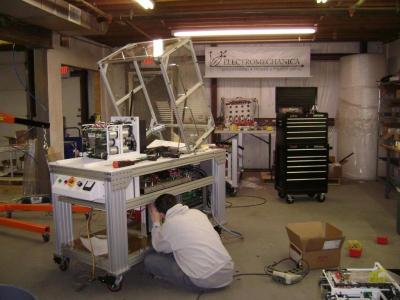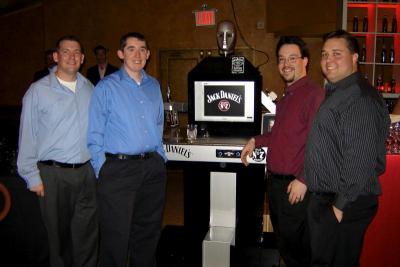Robots spotted in Mattapoisett industrial park



When Karl Edminster’s phone rings, there’s usually someone with an unusual request on the other end of the line.
Be it designing a robot to dispense shots of Jack Daniels or building a machine that analyzes worms for memory research, the founder of Electromechanica says his job is never boring.
Electromechanica, based in Mattapoisett, specializes in designing and creating robotics and testing systems that are outside the box.
“There’s always a steep learning curve,” said Edminster of the projects he gets. “People call us because we are willing to try it.”
Edminster started Electromechanica in 2001 in the unlikely location of a barn in Freetown, where he grew up.
At the time, the electromechancial engineer worked in research and development with Marion’s Sippican Ocean Systems, Inc., now Lockheed Martin. When business grew beyond a part-time gig, Edminster said, “I decided to jump in with both feet.”
Three years ago, he outgrew the barn and moved to Mattapoisett’s industrial park.
With a team of engineers and technicians, Electromechanica focuses on creating testing systems and robotics for a diverse clientele.
While the phrase “testing systems” might cause the non-engineer’s mind to immediately wander, Electromechanica’s machines often help with important research.
For example, the team created a machine for researchers at Tufts University that tracks the behavior of flatworms after they are given a variety of compounds to test memory. The prototype allows scientists to test the affect of certain drugs on memory, something that could prove helpful for Alzheimer’s patients one day, said Edminster.
Still, he admitted, “Testing systems pay the bills. Robotics is the fun stuff.”
Electromechanica creates robots with a variety of applications, said Edminster.
In 2006, the company got a call from Stuff Magazine in New York City with a project for a robot that could dispense Jack Daniels whiskey.
The project came with specifications a little different than those given by researchers. The advertisers told Edminster: “We want it to look cool and get people’s attention.”
“Trying to engineer something around the specifications of ‘look cool’ –what does that mean?” said Edminster. But with his team, the bartending butler with a TV for a belly and whiskey bottles for arms, took shape.
After more than a decade in business, Edminster is confident that his company can create machines that other companies won’t touch, and that has a lot to do with his employees.
“The key is not the equipment; it’s the people,” he said. “The equity and value is definitely in the people.”
Many of the six-full time employees at Electromechanica interned with the company while in high school or in college, and all are from the surrounding area.
Besides hiring innovative people, Edminster said success means “giving [employees] enough latitude to solve problems and giving people enough latitude to fail.”
But with the phone ringing in the next room, it doesn’t seem that failure is something Edminster has to worry about.














